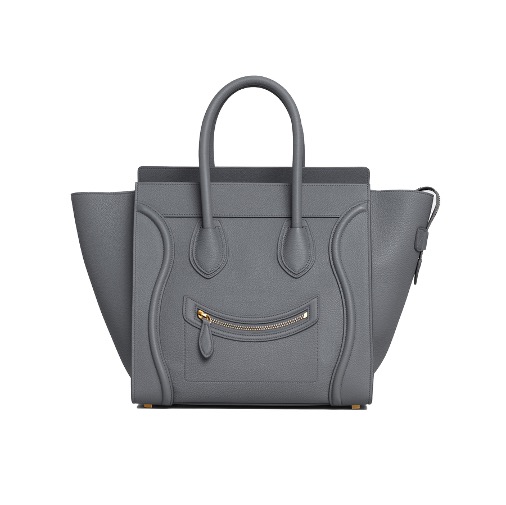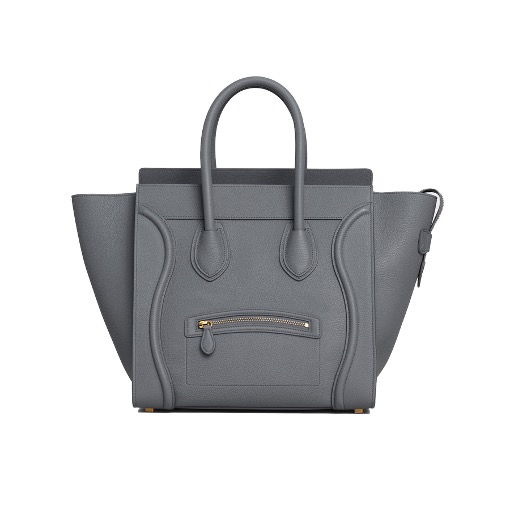Product Anthropomorphism Study
Investigating how human-like characteristics in product design influence consumer perception
Abstract
This research investigates the interaction between anthropomorphic facial expressions in product design and luxury brand positioning on consumer purchase intentions. Through a systematic experimental approach involving pilot testing and two controlled experiments (N=141), we demonstrate that positive anthropomorphic expressions significantly enhance purchase intentions, but this effect is moderated by luxury positioning context. The research contributes to the understanding of anthropomorphism in consumer behavior and provides practical implications for product design and brand positioning strategies.
Theoretical Framework
Anthropomorphism in Consumer Behavior
Product anthropomorphism refers to the tendency to attribute human characteristics, emotions, or behaviors to non-human entities, particularly products and brands (Aggarwal & McGill, 2007). This psychological phenomenon creates deeper emotional connections between consumers and products by making them more relatable and socially meaningful.
Key theoretical foundations:
- Social Cognition Theory: Humans naturally apply social cognitive processes to non-human objects
- Attachment Theory: Anthropomorphic features facilitate emotional attachment formation
- Luxury Consumption Theory: Luxury products serve as social signals and identity markers
Hypotheses
H1: Products with positive anthropomorphic expressions will generate higher purchase intentions compared to products with aloof expressions.
H2: The effect of anthropomorphic expressions on purchase intentions will be mediated by perceived product warmth.
H3: Luxury positioning will moderate the relationship between anthropomorphic expressions and purchase intentions.
H4: The mediation effect of perceived warmth will be conditional on luxury positioning context (moderated mediation).
Methodology
Research Design Overview
This research employed a systematic multi-stage experimental approach to ensure robust and reliable findings:
- Pilot Testing Phase: Stimulus development and validation
- Experiment 1: Main effect testing and mediation analysis (N=67)
- Experiment 2: Moderation and conditional process testing (N=74)
Stimulus Development and Pilot Testing
Initial stimulus development focused on creating product images with varying degrees of anthropomorphic facial expressions. The pilot testing phase was crucial for validating stimulus effectiveness.
Experimental Stimuli
Pilot Phase - Failed Stimuli


The initial pilot stimuli failed to achieve sufficient separation in both emotional valence and face-likeness perception (t(24) = 1.23, p = .231 for valence; t(24) = 0.89, p = .382 for face-likeness). This necessitated stimulus refinement.
Final Validated Stimuli


The final stimuli achieved significant differentiation:
- Emotional Valence: M_positive = 6.1, M_aloof = 3.2, t(28) = 4.67, p < .001
- Face-likeness Perception: M_positive = 5.8, M_aloof = 5.9, t(28) = 0.31, p = .758 (non-significant, ensuring comparable anthropomorphic perception)
Experiment 1: Main Effects and Mediation (N=67)
Design: 2 (Expression: Positive vs. Aloof) between-subjects experimental design
Participants: 67 undergraduate students (59% female, M_age = 21.3 years)
Procedure:
- Random assignment to expression condition
- Product evaluation task
- Measurement of dependent variables
- Demographic information collection
Key Measures:
- Purchase Intention (α = .92): 7-point Likert scale, 4 items
- Perceived Warmth (α = .89): 7-point Likert scale, 3 items adapted from Aaker et al. (2001)
- Product Attractiveness (α = .88): Control variable, 7-point Likert scale, 3 items
Experiment 2: Moderation and Conditional Process (N=74)
Design: 2 (Expression: Positive vs. Aloof) × 2 (Positioning: Luxury vs. Non-luxury) between-subjects factorial design
Participants: 74 participants recruited via online panel (52% female, M_age = 34.7 years)
Procedure:
- Random assignment to 2×2 experimental conditions
- Luxury positioning manipulation (premium vs. accessible brand description)
- Product evaluation with same stimuli from Experiment 1
- Comprehensive measurement battery
Additional Measures:
- Luxury Perception (α = .94): Manipulation check, 7-point Likert scale
- Brand Prestige (α = .91): 7-point Likert scale, 4 items
- Social Signaling Value (α = .87): 7-point Likert scale, 3 items
Statistical Analysis
Analytical Approach
Primary Analysis Tool: PROCESS Model 4 (Hayes, 2018) for mediation and moderated mediation analysis
Additional Analyses:
- Two-way ANOVA for main and interaction effects
- Simple slopes analysis for interaction decomposition
- Bootstrap confidence intervals (5,000 iterations) for indirect effects
Experiment 1 Results
Main Effect (H1 Support):
- Positive expression condition showed significantly higher purchase intentions (M = 5.2, SD = 1.1) compared to aloof expression (M = 4.1, SD = 1.3)
- F(1, 65) = 12.7, p < .001, η² = .16
Mediation Analysis (H2 Support):
- Indirect effect through perceived warmth: β = 0.43, SE = 0.15, 95% CI [0.18, 0.74]
- Direct effect remained significant: β = 0.38, SE = 0.18, p = .037
- Partial mediation confirmed
Experiment 2 Results
Moderation Effect (H3 Support):
- Significant Expression × Luxury Positioning interaction: F(1, 70) = 8.9, p = .004, η² = .11
Simple Slopes Analysis:
- Non-luxury condition: Positive expression advantage β = 0.67, SE = 0.19, p < .001
- Luxury condition: Non-significant expression effect β = 0.21, SE = 0.18, p = .247
Moderated Mediation (H4 Support):
- Index of moderated mediation: β = -0.32, SE = 0.12, 95% CI [-0.58, -0.09]
- Warmth mediation significant only in non-luxury condition
Key Findings
Theoretical Contributions
-
Anthropomorphic Expression Effects: Positive facial expressions in product design significantly enhance consumer purchase intentions through increased perceived warmth.
-
Boundary Conditions: The effectiveness of anthropomorphic expressions is contextually dependent, with luxury positioning constraining the positive effects.
-
Underlying Mechanism: Perceived warmth serves as a key mediator, but this psychological process is moderated by luxury brand positioning.
-
Consumer-Product Relationships: The research extends understanding of how consumers form emotional connections with products through anthropomorphic design elements.
Practical Applications
Product Design Implications:
- Incorporate positive anthropomorphic expressions in mass-market products to enhance consumer appeal
- Exercise caution when applying anthropomorphic design to luxury products where exclusivity and prestige are paramount
- Consider context-dependent design strategies based on brand positioning
Marketing Strategy Insights:
- Leverage warmth-based messaging for products with anthropomorphic design elements
- Align anthropomorphic design choices with overall brand positioning strategy
- Understand that luxury consumers may prioritize different product attributes than warmth
Research Skills Demonstrated
Methodological Rigor
- Systematic Stimulus Development: Multi-stage pilot testing to ensure valid experimental manipulations
- Experimental Control: Comprehensive control for confounding variables
- Statistical Sophistication: Advanced moderated mediation analysis using contemporary methods
Theoretical Integration
- Literature Synthesis: Integration of anthropomorphism, luxury consumption, and consumer psychology theories
- Hypothesis Development: Theory-driven hypothesis formation with clear predictions
- Construct Validation: Careful attention to measurement reliability and validity
Research Design Excellence
- Multi-study Approach: Sequential studies building from basic effects to complex interactions
- Sample Diversity: Use of both student and general population samples
- Replication Logic: Consistent findings across different experimental contexts
Limitations and Future Research
Study Limitations
-
Product Category Scope: Research focused on single product category; generalizability to other categories requires investigation
-
Cultural Context: Findings may be culture-specific; cross-cultural validation needed
-
Temporal Effects: Short-term purchase intention measurement; long-term behavioral outcomes unknown
-
Individual Differences: Limited exploration of personality or demographic moderators
Future Research Directions
-
Cross-Category Validation: Examine anthropomorphic effects across diverse product categories
-
Cultural Moderators: Investigate cultural values as boundary conditions for anthropomorphic design effectiveness
-
Long-term Effects: Longitudinal studies examining sustained impact on consumer behavior
-
Digital Contexts: Explore anthropomorphism in digital products and AI interfaces
-
Neural Mechanisms: Neurological investigation of anthropomorphic processing in consumer decision-making
Conclusion
This research makes significant contributions to understanding anthropomorphism in consumer behavior by demonstrating that while positive anthropomorphic expressions generally enhance purchase intentions through perceived warmth, this effect is constrained by luxury positioning context. The findings provide both theoretical insights into consumer-product relationships and practical guidance for design and marketing strategy. The systematic methodological approach and sophisticated statistical analysis demonstrate advanced research capabilities suitable for doctoral-level consumer behavior research.
The research highlights the importance of context-dependent design strategies and contributes to the growing literature on emotional design in consumer psychology. Future research should continue to explore the boundary conditions and underlying mechanisms of anthropomorphic design effectiveness across different consumer contexts.
Research Context: Advanced Consumer Behavior Research
Statistical Software: SPSS with PROCESS Macro
Keywords: Anthropomorphism, Product Design, Luxury Positioning, Consumer Psychology, Experimental Design